![]()
contributed by Angela Sanders [aspiring architect / fashionista / cultural commentator]
EDITOR’S NOTE: As the one-year anniversaries of Hurricanes Katrina and Rita loom, many of the United States Gulf Coast region’s die-hard residents still struggle hourly with demolished homes 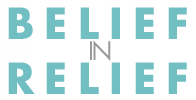 and businesses, irregular utilities and city services, and ruined personal finances. Though mostly absent in the daily headlines, progress is being made. Through a combination of compassionate individuals, secular clubs, and religious congregations, tens of thousands of everyday heroes continue to dedicate their efforts toward restoration of the region. Foremost on the list are the spaces which act not only as basic shelter for living and commerce, but also serve to comfort the collective psyche of those left in Mother Nature’s wake. Here, contributor Angela Sanders interviews three such champions who were acting on behalf of their faith-based organization. Her eagerness to share their frontline experience inspired us to encourage articles from other PLiNTH & CHiNTZ readers. Specifically, we would like to hear how design industry members are using their talents to rebuild others’ lives. As we tend to say, “Share your experience.” Now on to the heart of the matter…
and businesses, irregular utilities and city services, and ruined personal finances. Though mostly absent in the daily headlines, progress is being made. Through a combination of compassionate individuals, secular clubs, and religious congregations, tens of thousands of everyday heroes continue to dedicate their efforts toward restoration of the region. Foremost on the list are the spaces which act not only as basic shelter for living and commerce, but also serve to comfort the collective psyche of those left in Mother Nature’s wake. Here, contributor Angela Sanders interviews three such champions who were acting on behalf of their faith-based organization. Her eagerness to share their frontline experience inspired us to encourage articles from other PLiNTH & CHiNTZ readers. Specifically, we would like to hear how design industry members are using their talents to rebuild others’ lives. As we tend to say, “Share your experience.” Now on to the heart of the matter…
Hurricane Katrina devastated the Gulf Coast states close to one year ago. Time passes and the interest in the rebuilding effort wanes. I believe that it’s important to refocus on this ongoing need, so I spoke to three people who have volunteered their time to those who need it most. Of course, there are an endless number of questions that could be asked; however, for brevity’s sake, I chose only eight.
A small introduction is necessary. The three interviewees represent varying age groups: Mike is in his late 40s and self-employed; Samone is in her early 20s and works as an accounting assistant; and Lee is in her late 50s and teaches preschool. All of them are from the Dallas area, and all are Jehovah’s Witnesses. Though these three were in separate work groups, they all shared one common goal: to rebuild people’s lives and restore people’s spirits.
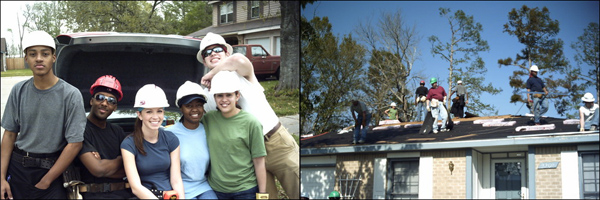
What motivated you to travel to Louisiana to help with the relief efforts”
Mike: After seeing the huge amount of damage done to the New Orleans area, I knew that our brothers and sisters there would be in need of assistance. You have to put yourself in their shoes.
Samone: It was really sad to see the vast devastation that affected the Gulf region of the United States. Knowing that many people’s lives were changed drastically forever moved me to want to help them to get back to as much normalcy as possible. Also, Acts 20:35 in the Bible brings out that there is more happiness in giving than in receiving. This was proven when so many, including myself, helped out.
Lee: I saw a video of the conditions in New Orleans and all the work that the friends were doing, and I wanted to help.
How are Jehovah’s Witnesses informed and organized to do the relief work”
Mike: The Christian Congregation works through local brothers. In this case a command post was set up in Baton Rouge, then several hubs were set up in the areas that were affected. The local brothers had to go to the hubs to get signed up for relief workers to come and assist them with the construction.
Samone: Through our local congregations, for the most part. The brothers that oversee the building efforts for the organization made sure to keep everyone well informed of the needs and progress of the relief work. It was a very organized and efficient system. For those who volunteer their time on a regular basis, email notification was sent regularly explaining in detail the skills and supplies needed.
Lee: We receive letters keeping us updated concerning what is being done in the affected areas. The brothers have a building committee that oversees the work.
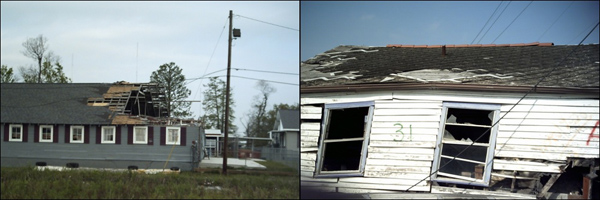
How many do you estimate have shared in the relief efforts”
Mike: Literally thousands have traveled from all over the US to help. I met brothers from Montana the first day I was in the area for training and talked to one who knew one of my friends who had been in Montana as a child. Small world.
Samone: I don’t know an exact number, but I’m sure it’s well over 1,000 volunteers who have given their time to helping in the relief effort.
Lee: I am sure there have been hundreds of brothers and sisters.
From how far have they traveled to share”
Mike: Some drove from as far as Maine, Montana, Colorado, California, Kansas. These are just the ones that I personally met at the one hub we worked at.
Samone: The longest distance I noted were volunteers from Paris, France. It was truly heartwarming to see them sacrifice so much.
Lee: I met people from California, Wisconsin, New York, Canada, Oklahoma, and Texas.
On average, how long did they stay”
Mike: They stay from a few weeks to months, and some that were over the department where I was had planned on being there till the project was finished.
Samone: Most stayed anywhere from a weekend to four months. I think the average was about a week, though. I also know of quite a few who moved down permanently to help.
Lee: Some can only stay a weekend, while others stay two weeks at a time. One sister said her family goes once a month to help out.
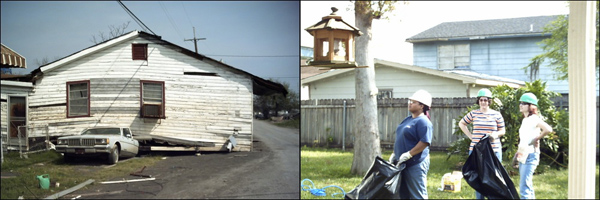
How are expenses covered”
Mike: Construction expenses are provided by the Christian Congregation — materials, lumber, and roofing… some were donated. Individuals paid their expenses to travel, and were put up to stay by the locals.
Samone: Basically by the volunteer his/herself. Many donated gas money for those who were driving back and forth on a regular basis, but your traveling expenses were your responsibility.
Lee: Volunteers use their own money to get to their assignment. There are seven hubs across the damaged areas, and we were assigned to Hub #7.
What arrangements have been made to provide housing and food for the relief workers”
Mike: The hub has a rooming department that puts friends together with the locals, and food was provided at each hub by the same people that provide food for the quick builds for Kingdom Halls.
Samone: A wonderful arrangement was put in place by the Kingdom Hall Building Committee to house the volunteers with those who lived in the disaster area, as well as in warehouses, gymnasiums, and trailers. They were all quite comfortable. The food arrangement was wonderful as well. We had full-course breakfast, lunch, dinner, and snacks that kept us well nourished and physically satisfied. Most foodstuffs were donated or paid for by donations from many people.
Lee: Jehovah’s Witnesses open up their homes in the area for the workers to sleep. Food supplies are provided through voluntary donations or contributions.
What are the estimated numbers of homes repaired and/or rebuilt” And how many more are there to rebuild and/or repair”
Mike: There’s much more to be done for sure, but I have no idea what is ahead.
Samone: When I went in March they were wrapping up the roofing phase of the building. I believe they had completed 500 homes at that point since the hurricane in September. I’m sure that number has risen since then.
Lee: Over 500 homes had been repaired when I volunteered in March.
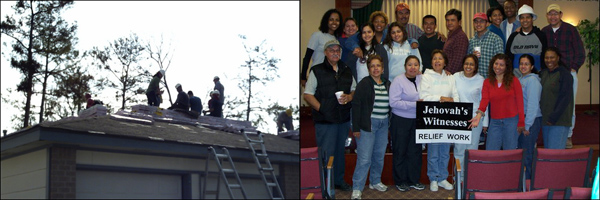
Follow Their Lead
A week before the end of June the assignments for Hub #7 were to have been completed. This work, however, does not include the other hubs across the Gulf Coast or the Kingdom Halls that will be need to be repaired or completely rebuilt.
Neither Samone nor Lee had skills in the work they were doing, but they jumped right in and did so enthusiastically. All training was organized by the Regional Building Committee of Jehovah’s Witnesses and performed on site.
EDITOR’S NOTE: We hope that the personal dedication shown by these individuals will inspire you to share what you can spare. Whether on your own or through a religious or secular group, through seemingly small gestures you are capable of adding enormous value to another’s life. For a few ideas on how you can donate time, items, and money, refer to September 2005’s LIGHT READING.


